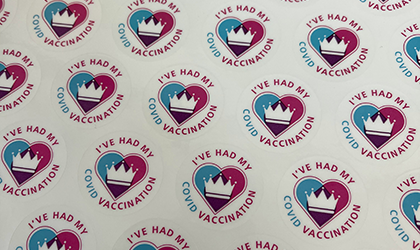
Just a few days before the UK began its roll-out of a second Covid-19 vaccine, the decision was made to defer second doses of both vaccines to 12 weeks in order to maximize the number of citizens in “priority groups” who would receive a first dose by mid-February 2021. This decision departed radically from the trialled inter-dose interval of 3 weeks for the Pfizer/BioNTech messenger RNA (mRNA) vaccine, the world’s first mRNA vaccine, and so is immunologically heroic.
(Oxford/AstraZeneca’s virus-vectored DNA (vvDNA) vaccine was the second Covid vaccine to be approved, with an approved inter-dose interval of 4 to 12 weeks.)
Doctors were told by the UK’s four chief medical officers (CMOs) that the decision to defer second doses was in the public interest. It may well be. But we will not know that unless we urgently implement a randomized study, requiring only one-third extra doses, to learn what the effect might be of delaying a second dose of the mRNA vaccine.
A missed opportunity
The UK began vaccinating people in priority groups 1 and 2 (residents and staff in care homes for older adults; all those aged 80+ years, and frontline health and social care workers) on 8 December 2020 to 3 January 2021, with first and second doses of the Pfizer/BioNTech mRNA vaccine. Second doses were pre-scheduled to be administered 21 days after the first, as trialled1 and as originally authorized by the Medicines and Healthcare products Regulatory Agency (MHRA).
Then, on 31 December 2020, doctors were told to change tack. They were advised by the UK’s CMOs to maximize, by mid-February 2021, the number of first doses of vaccine administered to citizens in priority groups 1-4 (including all those aged 70+ years, and clinically extremely vulnerable individuals aged 16+). Doctors were told that those in priority groups 1 and 2 who had received a first dose of mRNA vaccine should have their pre-scheduled second dose deferred: from 21 days to a maximum dose-interval of 12 weeks. On 31 December 2020, MHRA updated its authorization to read that a second dose of Pfizer/BioNTech vaccine should be administered “at least 21 days” after the first.
(On 4 January 2021, the UK began offering the Oxford/AstraZeneca vvDNA vaccine, with second doses to be administered 12 weeks after the first.2)
What actually happened, as Table 1 shows, is that doctors exercised clinical discretion very differently in the four nations of the UK. An estimated one-third of early recipients of the mRNA vaccine in England had received their second dose before 25 January 2021 – i.e., within 21 days of the first dose. This compares to 56% in Northern Ireland but at most 6% in Scotland and Wales.
Table 1: First and second doses of Pfizer/BioNTech vaccine administered by nation during 8 December 2020 to 3 January (first doses) and 28 December 2020 to 24 January 2021(second doses). Note: England, alone of the four nations, failed to report its number of Pfizer/BioNTech first doses given during 8 to 13 December 2020. However, since first doses per million of population were broadly similar for England and Northern Ireland in the week ended 20 December 2020, I have imputed England’s first week total based on Northern Ireland. Scotland, alone of the four nations, reports first doses by vaccine-type if administered after 3 January 2021.
Week ending | England (population | Scotland | Wales | Northern Ireland |
13 December, | 107 350 (Pro rata with NI; see Note) | 18 858 | 8 181 | 3 623 |
20 December, | 568 044 | 40 750 | 15 386 | 12 445 |
1st doses totalled: | 1 261 656 (Week 1 pro rata with NI; | 115 194 | 49 851 | 40 685 |
2nd doses totalled: | 428 373
| 5 694 | 560 | 22 713 |
2nd doses as percentage of 1st doses from | 34.0% | 5.9% | 1.1% | 55.8% |
This heterogeneity represents a huge, missed opportunity. Rather than relying on clinical discretion, first dose mRNA-vaccine recipients in England should have been selected at random to receive their second injection three weeks after the first. Had this happened, we’d know already, on a like-for-like basis, the real-world impact that adherence to the CMOs’ advice had had on the mRNA vaccine’s effectiveness against cases of SARS-CoV-2 in weeks 5 and 6 and in weeks 7-9 after a first dose. We’d discover this by comparing between those randomly assigned to receive/not receive their second Pfizer/BioNTech dose according to the trialled schedule.
In the three weeks from 25 January to 14 February 2021, the UK might administer a further 1.8 million first doses of the Pfizer/BioNTech mRNA vaccine. Let us urgently adopt a tilted randomization ratio of 1:2, whereby one-third of these first dose recipients are sent an appointment to receive their second dose at three weeks after their first. Using record-linkage (as happens anyway but hitherto in the absence of randomization) we can compare incident SARS-CoV-2 diagnoses during weeks 5 and 6 and weeks 7-9 after the first dose between the two randomized groups. Longer-term, we can also learn about the persistence of immunity – for example, by comparing the randomized groups’ incident SARS-CoV-2 cases in autumn/winter 2021.
Consent prior to randomization is preferable, beyond the pandemic’s winter onslaught, and could begin from 15 February 2021 for a second major cohort of younger citizens (aged under 70 years) who would be due to receive their first dose of mRNA vaccine. Prior consent would enable their participation in supplementary studies to monitor, for example, the persistence of neutralizing antibodies and T-cell responses.
The importance of randomization
The UK’s policy-decision to defer second doses of the world’s first mRNA vaccine has no precedent. Other nations have decided differently by adhering to the mRNA dosing schedules that were trialled, by Pfizer/BioNTech and by Moderna,3 and they will look to the UK’s National Health Service, experimental sciences and record-linkage capabilities for robust evidence about both the short- and longer-term impacts of the UK’s decision.
Without randomization, robust evidence is hard to adduce against the backdrop of weekly changing SARS-CoV-2 incidence. For example, Israel reported that its SARS-CoV-2 incidence increased by one-third between weeks 52 and 53 in 2020 and again by one third between week 53 in 2020 and week 1 in 2021.4 One needs to know also, in detail, how Israel’s roll-out of first doses of the Pfizer/BioNTech vaccine evolved weekly from 19 December 2020, because the rising incidence pattern – as described – complicates estimation of vaccine effectiveness between the first and second doses in Israel.
Currently in lockdown but with a more transmissible variant of concern ascendant, the UK hopes that its SARS-CoV-2 incidence is decreasing from 25 January but, from 8 December, we experienced a complex pattern of increasing, then decreased or plateaued SARS-CoV-2 incidence, together with a partially hidden pattern of roll-out by vaccine type and a nationally variable, selective exercise of clinical discretion.5 Unless or until unravelled, this complexity confounds the UK’s inferences about mRNA vaccine effectiveness in the short-term: precisely because randomization to dose-interval has been crucially lacking.
Once randomization is activated, as above, not only do we get clear-cut answers, but those answers will help unravel the confounding that bedevils inferences from the early observational data6 – and so we have a triple win from immediately activating 1:2 randomization.
About the author
Sheila M. Bird is formerly programme leader at the MRC Biostatistics Unit, Cambridge University. She is a member of the Significance editorial board and the Royal Statistical Society’s Covid-19 Task Force. She writes here in a personal capacity.
Disclosure statement
The author wrote to the Secretary of State for Health about the need for tilted randomization on 13 January 2021. The author served on the UK’s Medicines Commission in the 1990s and chaired the RSS’s Working Party on Performance Monitoring in the Public Services in 2003, which called for more heed to randomized evaluation of policy-decisions.
References:
- Polack FP, Thomas SJ, Kitchin N, Absalon J, Gurtman A, Lockhart S et al. Safety and efficacy of the BNT162b2 mRNA COVID-19 vaccine. New England Journal of Medicine 2020; 383:2603-2615. doi: 10.1056/NEJMoa2034577.
- Voysey M, Clemens SAC, Madhi SA, Weckx LY, Folegatti PM, Aley PK et al. Safety and efficacy of the ChAdOx1 nCoV-19 vaccine (AZD1222) against SARS-CoV-2: an interim analysis of four randomised controlled trials in Brazil, South Africa, and the UK. Lancet 2021; 397: 99-111.
- Baden LR, El Sahly HM, Essink B, Kotloff K, Frey S, Novak R et al. for the COVE Study Group. Efficacy and safety of the mRNA-1273 SARS-CoV-2 vaccine. New England Journal of Medicine 2021. doi: 10.1056/NEJMoa2035389.
- Chodick G, Tene L, Patalon T, Gazit S, Ben Tov A, Cohen D. The effectiveness of the first dose of BNT162b2 vaccine in reducing SARS-CoV-2 infection 13-24 days after immunization: real-world evidence. MedRxiv. doi: 10.1101/2021.01.27.21250612.
- Riley S, Eales O, Walters CE, Wang H, Ainslie KEC, Atchinson C et al. REACT-1 round 8 final report: high average prevalence with regional heterogeneity of trends in SARS-CoV-2 infection in the community in England during January 2021. https://spiral.imperial.ac.uk/bitstream/10044/1/85703/10/react1_r8_full_preprint_1.1.pdf.
- Giorgi E, Sesay SS, Terlouw DJ, Diggle PJ. Combining data from multiple spatially referenced prevalence surveys using generalized linear geostatistical models. Journal of the Royal Statistical Society A 2015; 178: 445-464.




